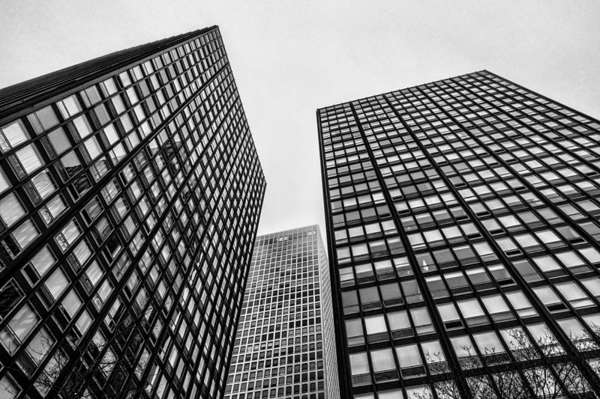Hamburg’s sister city Chicago
- 31. July 2017 - Emigration, General, German-American, Hamburg, History, Knowledge
Since July 1994, to be precise since 20 July 1994, Chicago is Hamburg’s twin city. After the first initiative was made in 1957, the idea was readopted in the 1990s.
There are good reasons for being sister cities. Both are characterized by their waterside location (at Lake Michigan and the Elbe), despite at the same time being located at the inland. They are both economical as well as cultural centers and there are furthermore historical parallels and connections. Just to mention it briefly, both cities were affected by great fires (Hamburg in 1842, Chicago in 1871) that changed their appearances permanently. But most of all, both cities played an important role in the migration from Germany to America in the 19th century: Hamburg as an emigration harbor, Chicago as a place of refuge for immigrants.
The (German) history of Chicago
Chicago (Illinois) is today with a population of about 2.7 million the third largest city of the United States. The name is of Native American origin. As early as the 1770s, Jean-Baptiste Point du Sable established a trading post here. Soon it thrived due to the convenient location at Lake Michigan (gateway to the west). By the way, after the American Revolutionary War, trade with the USA significantly contributed to Hamburg’s economic uprising.
Chicago was officially founded in 1833. Four years later it became a city. And it grew fast. After the settlement had about 100 inhabitants around 1830, it became nearly 4,500 in 1840, more than 100,000 in 1860 and in 1890 the million thresholds was reached. Among the first inhabitants were Germans as early as the 1830s. But in larger numbers they only came after the failure of the German revolutions of 1848/49. In 1860 nearly 20% of Chicago’s population was of German origin. During the second half of the 19th century they were the largest ethnic group in the city. At this time the Midwest was in general a main place for settlement for German immigrants. Other cities with high percentages of German inhabitants were for example St. Louis (Missouri), Cincinnati (Ohio) and Milwaukee (Wisconsin). Not for nothing it is spoken of the “German Belt”. These German immigrants arrived not always but often from Hamburg, as it was one of the most important German emigration harbors aside from Bremerhaven. Some stayed only temporarily to earn money and move on to the west, others stayed permanently.
A strong German-American community with numerous associations, clubs, initiatives and activities evolved. Even the Chicago Symphony Orchestra that is one of the biggest and best within the United States was founded in 1891 by a German. Theodore Thomas (1835-1905) was born in Esens (East Frisia) and hat immigrated to the USA in 1849. He was chief conductor until 1905 and was followed by Friedrich August Stock, who was born in Germany as well. But the Symphony Orchestra’s worldwide reputation was only established by Fritz Reiner, who was born in Budapest, from 1953 onwards.
For the German immigrants their Sunday leisure time with beer was important. And when in 1855 the sale of alcohol was banned, the so-called “Lager Beer Riots” occurred.
The German immigrants were also quite engaged in trade unions. They were one of the reasons for Chicago becoming an important scene for the trade union movement. The demand for the eight-hour day in May 1886 ended up bloody with the “Haymarket Riot” in Chicago. Due to this event International Workers’ Day (Labor Day in many countries) is today celebrated on 1 May.
During the 20th century the number of German immigrants decreased in Chicago. During the First and Second World Wars there was a distinct Anti-German sentiment in America and Chicago as well. During this time, many Americans with German origin changed their names and street names were changed as well. The strong sense of German identity vanished.
German Chicago today
But this doesn’t mean that there are no German traces to be found in Chicago today. According to the U.S. Census 2000, 15.8% of the Chicago Area population had German ancestors. There are still, or again, many German-American associations. The city is even home to the German American National Congress (DANK) that was founded in 1959 and is some kind of umbrella organization for German-American associations. There are also many German restaurants. And the by now national newspaper “Amerika Woche” was originally from Chicago. Nowadays there are furthermore a Christkindlmarkt, Oktoberfests and the annual Von-Steuben parade.
The German quarter of the city is today located around Lincoln Square. There are still many German shops or shops that were founded by German immigrants. At Lincoln Square you can see a part of the Berlin Wall since 2008. Furthermore there are for example a Goethe and a Schiller street in Chicago and many branches of German companies.
The Catholic Church St. Michael was first build in 1852 as a wooden church for German immigrants. In 1869 a new red sandstone building was opened. It was one of the highest buildings of the city. The Great Chicago Fire in 1871 only spared the outer walls of the church that was reconstructed afterwards.
After the Great Chicago Fire the city became an architectural field of experimentation. There was a building boom. Today Chicago is characterized by its modern architecture and an impressive skyline. To this, German architects contributed as well. Many buildings stem from Ludwig Mies van der Rohe. The German-American architect was born in Aachen in 1886 and died in Chicago in 1969. He taught at the Illinois Institute of Technology and shaped together with his students the city’s skyline. He is responsible for the IBM Building or the Lake Shore Drive Apartments amongst others. The German architect Helmut Jahn (*1940, known for instance for the Sony Center at the Potsdamer Platz in Berlin) has contributed to the cityscape as well, one example is the State of Illinois Center.



0 comments